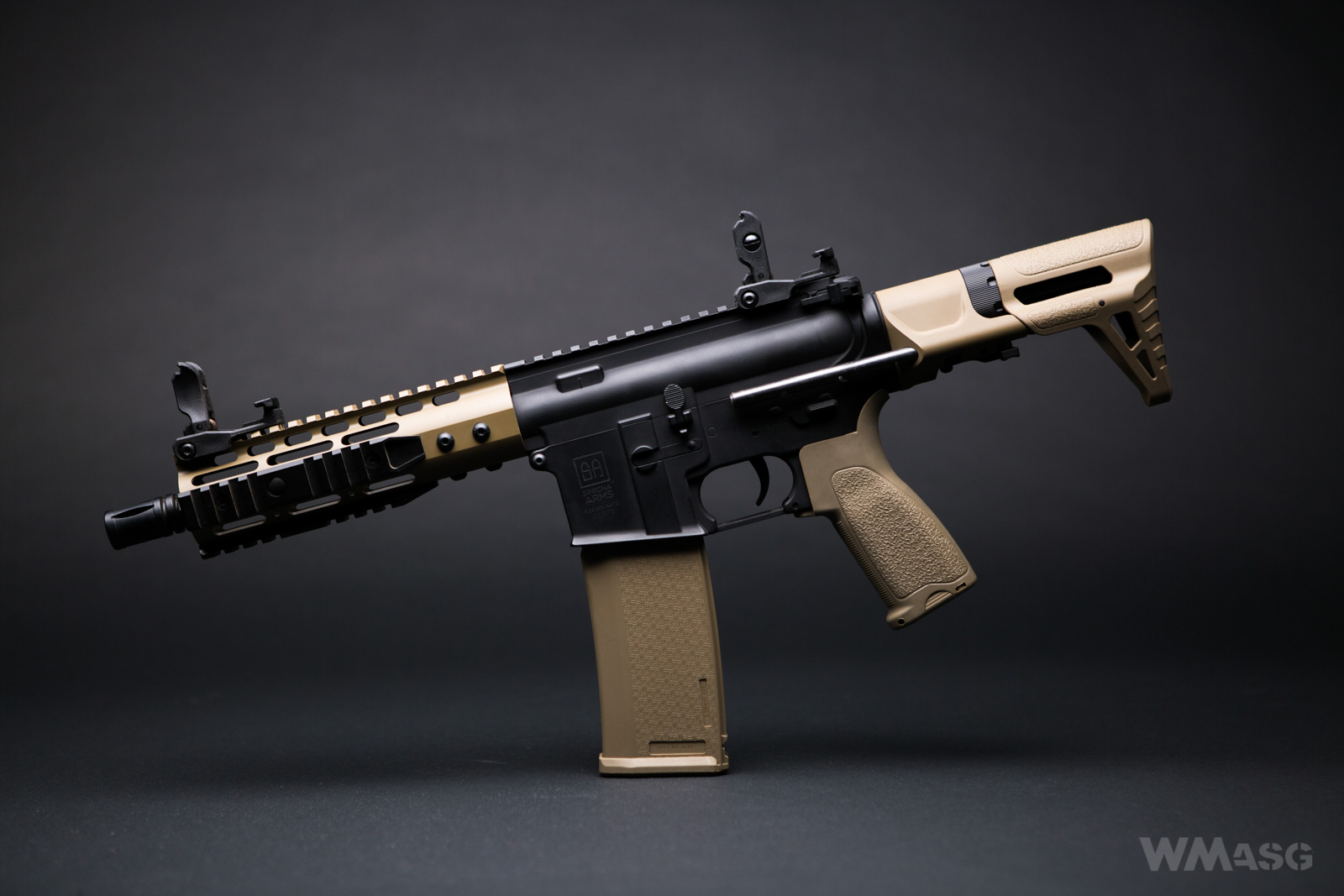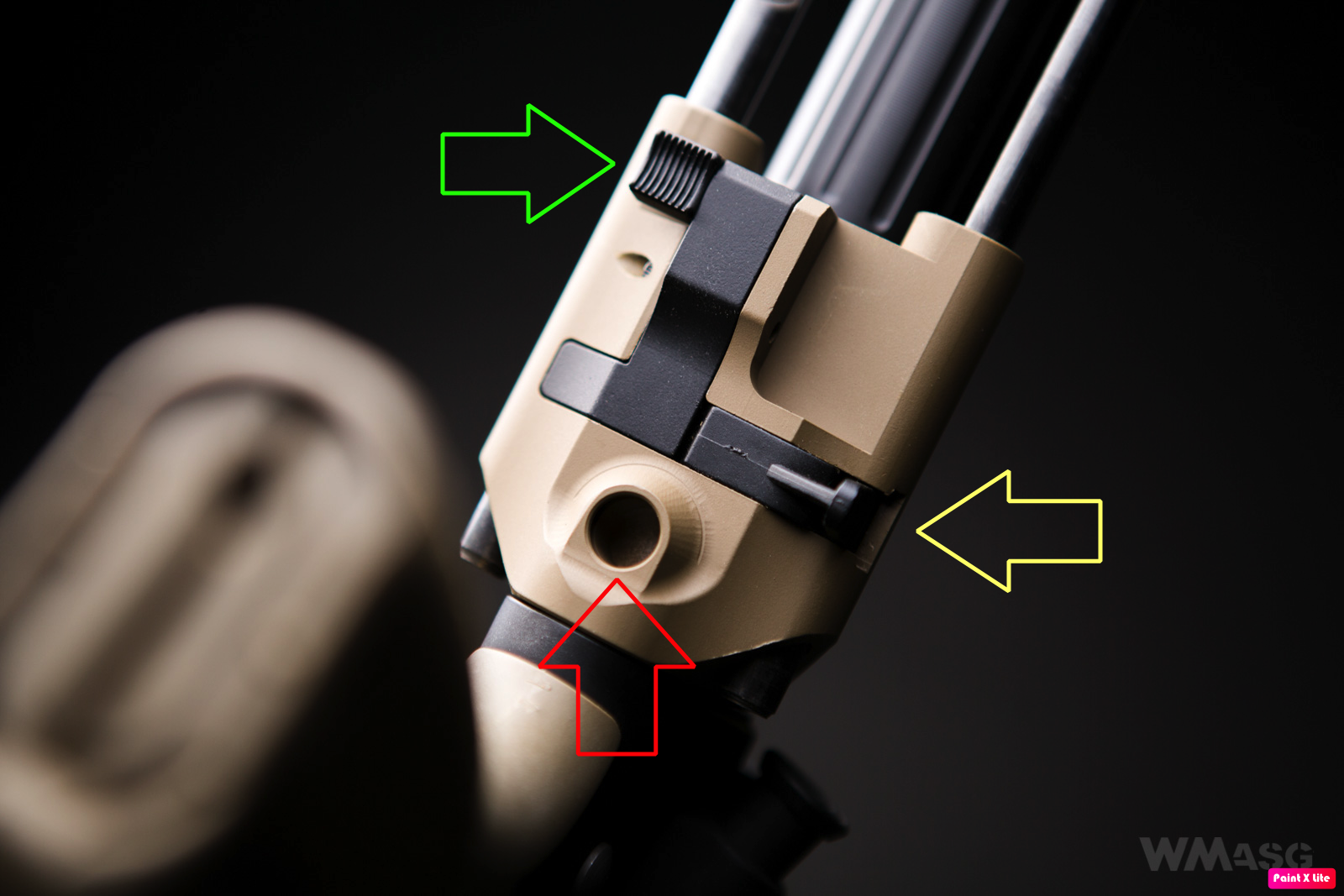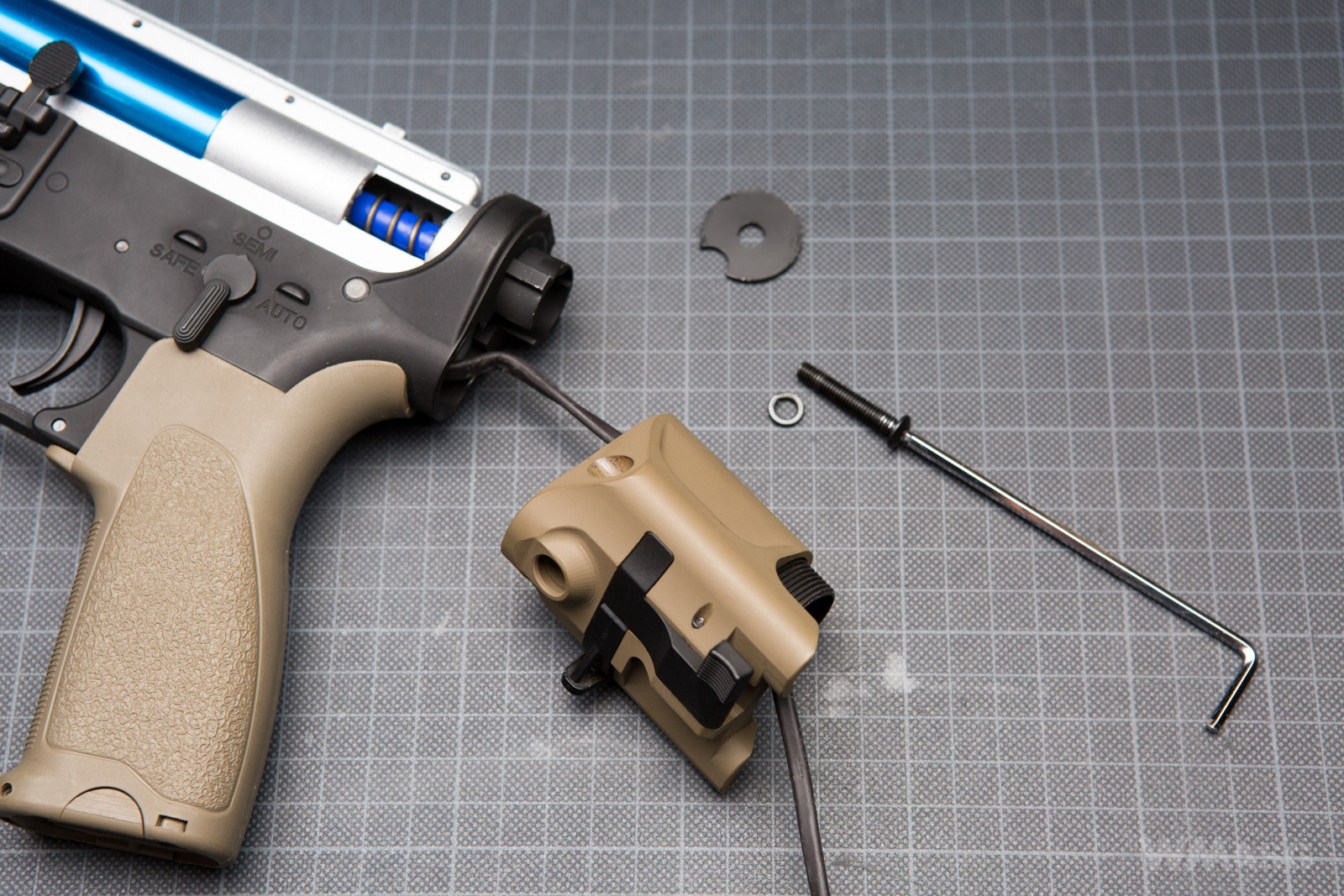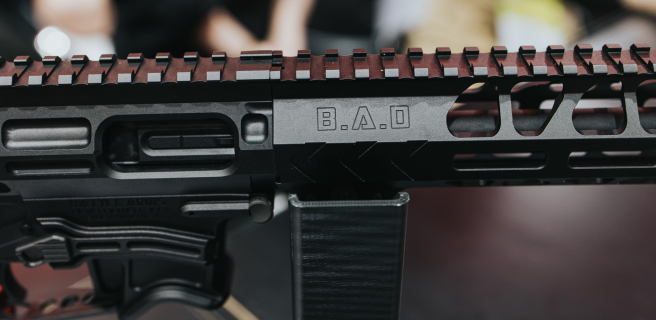At the beginning of this year, we were among the first to have a thorough look at a representative of the then new Specna Arms product line - the EDGE series. Today, after more than half a year, we return to EDGE series replicas and look at one that has been recently introduced to the market. I am talking about the SA-E12 PDW EDGE sub-carbine, the second shortest AR-15 replica in Specna's current and very wide offer.

As with the first EDGE replica, we were impressed by the quality of workmanship and the fitting of the replica's external parts. The quality of assembly and stiffness of the design made an equally good impression. Previously, we were dealing with a carbine in gray color (the SA-E17 Gray) and there we liked its look very much which, thanks to the color and texture, we rated as very realistic. The currently tested replica has a black receiver and looks even better.

Basic technical parameters:
- overall length (collapsed/extended stock): 570/660 mm;
- weight: 2420 g;
- inner barrel length: 190 mm;
- magazine capacity: 125 BBs;
- muzzle velocity (using 0.2 g BBs): 310/370 fps (depending on the spring used).
The plastic components are: the pistol grip, the butt stock, the magazine and the sights. Other parts are made of aluminum alloy (ZnAl).

The set![]()
Replicas from the EDGE series are sold with many accessories, however, differing between each replica. Together with SA-E12 PDW EDGE we get:
- 3 identical metal Picatinny rails with a QD socket;
- a short angled tactical front grip with a storage compartment;
- folding detachable sights;
- 2 mid-cap magazines (2x125 BBs);
- an additional main spring M90 (M110 is installed in the replica);
- instructions (code card) for the pre-installed Gate X-ASR MOSFET;
- a T-deans to small Tamiya adapter (the T-deans connector is factory installed);
- a user's manual;
- an individual quality control certificate with results of muzzle velocity measurements;
- a key strap and several stickers.
Its quite a lot. The additional magazine and sights that other manufacturers sometimes don't supply are particularly pleasing.

The design
The SA-E12 PDW has a classic AR-15 receiver without any modern modifications. As with most replicas currently produced, the upper receiver is connected to the lower receiver by sliding one on top of the other and securing the connection with the front pin. That's probably why the front pin has a locking screw. The rear pin is classic, its only pushed in.
On the left side of the receiver there are typical switches: safety/selector switch and the bolt catch, which in the EDGE series is only a dummy. On the magazine well there is a deep Specna Arms logo made using a laser, the designation of the 5.56 mm caliber and an individual serial number of the replica. They are not the prettiest, although they were made cleanly and carefully. People who do not pay too much attention to markings should not be bothered by these ones. Others should look for something among the slightly more expensive EDGE replicas with licensed Rock River Arms markings.

There are no surprises on the right side of the receiver. We have a classic forward assist, a deflector, an ejection port cover and a magazine release button. The cover is clearly brighter than the receiver. It is opened by pulling the charging handle in the typical way, backwards.

Unfortunately, in the EDGE series there is no mechanism locking the dummy bolt carrier in the rear position. When adjusting the Hop-Up, one must hold the handle in the rear position. The plastic Hop-Up chamber visible in the ejection port has a large, comfortable and precise adjustment knob (rotary type).

When released, the handle returns the dummy bolt carrier to its default position freely and with unexpected dynamic.

The charging handle is typical, just like the manipulators mentioned above. It is distinguished only by a slightly enlarged button on the left sided.

The distinctive pistol grip with a distinct texture is used on all EDGE replicas.

It has a slightly misleading QD name, but it allows for quick and tools-free and access to the motor.

Its adjustment of the motor can be, of course, made without opening the grip, by placing an Allen key in the hole marked with the red arrow.

The mounting of the grip with 4 screws deserves praise.

Another solution with praising is the perfect fit of the grip with the lower receiver.


The PDW type stock used in the replica slides on two steel guiding rods. The rods have no common points with the replica's receiver - they are placed and work in holes in the stock mount. The length of the stock can be, of course, adjusted. In addition to the extreme positions, there are two intermediate ones. The adjustments are done using buttons on both sides of the mount, but their operation is slightly different. The button on the left allows you to simply adjust the length of the stock. However, the button on the right also allows you to slide the back plate with the rods to mount the battery or replace the main spring. On the bottom of the mount there is a QD socket for attaching a carrying sling swivel. The green arrow shows the left button, the yellow arrow shows the right one, and the red arrow shows the QD socket.

The stock's real plate, despite its small size, works surprisingly well.

The 7-inch KeyMod handguard is made of aluminum alloy.


Unfortunately, the handguard's upper Picatinny rail is nearly a millimeter higher that the one on the upper receiver, which is clearly visible.

The handguard is mounted on a screwed on mounting ring using six screws, two on each side and two at bottom. Unfortunately, as in other Specna Arms replicas, the dummy gas block is also missing here.

The barrel ends with an A2 type flash hider with a 14mm left-hand thread. The function of washers is performed by two rubber O-rings. Unfortunately, the flash hider tightened to the end loses its proper orientation. The part without slits, that should be at the bottom, is oriented slightly to the side. It is necessary to make a small correction of the thickness of the washers, on a trial and error basis, or tighten the device with a little less force. The inner barrel visible on the thumbnail below has minimal clearance in the outer barrel, but a small amount of Teflon is enough to alleviate this issue if necessary.

The folding sights are made of plastic. This is the same model that Specna Arms uses in its other replicas.

The front sight and the rear sight have quite strong springs installed. Their role is to flip the sights up after pressing the release buttons.

To fold the sights one just has to press them down until the latches snap into place. The front sight is vertically adjustable. The rear sight is adjusted horizontally.

It would be Ideal if the sights could also be used in a folded position, in some simplified form, without adjustment. Unfortunately, this is not possible.


The gearbox
The replica is powered by the Orion gearbox, thanks to which Specna Arms set the bar very high, making life difficult for other manufacturers. First of all, we have the ESA™ quick spring change system that allows you to do the change without pulling the gearbox out of the receiver. Its enough to remove the stock.


Secondly, the reinforced parts used inside prove the quality and value of the Orion:
- a piston with full steel teeth;
- a spring guide with a bearing;
- an aluminum piston head with a bearing;
- an aluminum cylinder head with a double O-ring;
- an aluminum nozzle with an O-ring;
- the X-ASR Gate MOSFET and low-resistance wires
This configuration is well thought through, the quality of the parts is good and the assembly does not leave much to be desired. We didn't find any parts that would need to be adjusted right after purchase.

The magazine
The magazines supplied are the polymer S-MAG mid-caps with a nominal capacity of 125 BBs each. In practice, you can load a bit more. The magazines have a texture that allows a more secure grip. The texture consists of the repeatedly duplicated Specna Arms (SA) logo.

Battery installation

Space for the battery is provided in the buffer tube. And here lies a problem ... Some of the precious space is taken by the long wires coming out of the replica's receiver, 3 flat connectors connecting the wiring with the X-ASR MOSFET, the MOSFET itself, which is not that small and the T-type connector. Along with the tested replica we received a 7.4V LiPo 1200mAh battery and this is probably the largest battery that can be fitted inside a tube. Placing an 11.1V packet there seems impossible. We considered the battery we received as a dedicated one. Unfortunately, the rate of fire of a replica powered by such a battery (10.6 BBs/s) is unsatisfactory in our opinion.



Shooting
During shooting tests, the subcarbine turned out to be very handy. The PDW type stock forces to adopt a compact, "reduced" posture with the elbows close to the body. With a 7-inch short handguard, the factory supplied angled front grip is very useful. Without it it is relatively easy to accidentally extend some part of the supporting hand (fingers) in front of the barrel outlet. The sound of the mechanism's operation raises no doubts. Both magazines were feeding without problems. Both were loaded with slightly more ammunition than the standard 125 BBs.
The only critical remark is the low rate of fire achieved on the 7.4V test battery. After switching to an 11.1V packet, the rate of fire problem was solved, but the battery must be stored outside of the replica somehow.
Muzzle velocity and target shooting test
The test was carried out on our own enclosed shooting range, at an ambient temperature of 20°C, the Hop-Up was set to zero. The muzzle velocity measurements were made with the XCORTECH X3500 chronograph using Open Blaster 0.2 g BBs.
Muzzle velocity measurement results (M90 spring):
1. 329.4
2. 326.3
3. 325.4
4. 325.7
5. 326.6
6. 322.4
7. 323.7
8. 323.5
9. 322.8
10. 326.2
Average: 325.2 fps.
Spread: 7 fps - a very good result.
Measured rate of fire (using an 7.4V 1200 mAh 25/50C LiPo battery) was 10 BBs/s.
Target shooting test
Single fire. Distance between BB holes - 8 cm.

Full-auto. Distance between BB holes - 5 cm.

Summary
Like the other models from the EDGE series, the replica looks great from the visual side. It can be seen that Specna places great importance to issues related to the quality of production of individual parts and the assembly of the whole. In this particular replica I personally miss some brand markings, but of course it doesn't have the slightest impact on its operation and probably also results in a fairly attractive price.
Mechanically, the E12 PDW leaves little to be desired. The selection of parts used in the Orion gearbox minimizes the expenses associated with any kind of tuning. If you stay at the factory muzzle velocity, you can expect long and trouble-free operation. This is definitely a tough act to follow for manufacturers of competitive replicas.

On the next page technical details for those interested.






























